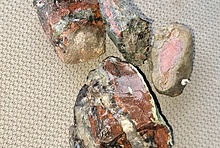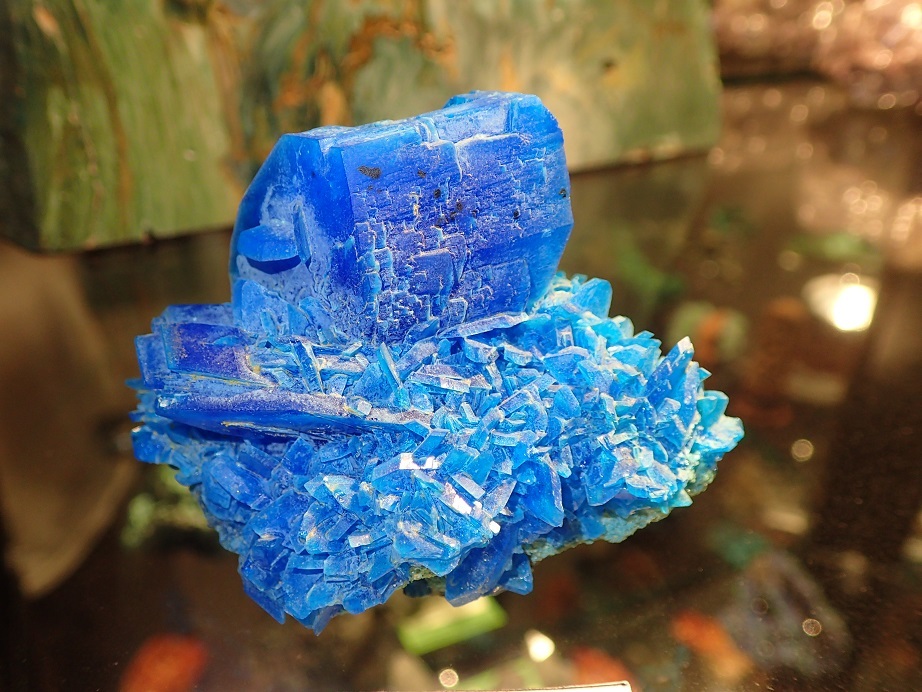Home PageAbout MindatThe Mindat ManualHistory of MindatCopyright StatusWho We AreContact UsAdvertise on Mindat
Donate to MindatCorporate SponsorshipSponsor a PageSponsored PagesMindat AdvertisersAdvertise on Mindat
Learning CenterWhat is a mineral?The most common minerals on earthInformation for EducatorsMindat ArticlesThe ElementsThe Rock H. Currier Digital LibraryGeologic Time
Minerals by PropertiesMinerals by ChemistryAdvanced Locality SearchRandom MineralRandom LocalitySearch by minIDLocalities Near MeSearch ArticlesSearch GlossaryMore Search Options
The Mindat ManualAdd a New PhotoRate PhotosLocality Edit ReportCoordinate Completion ReportAdd Glossary Item
Mining CompaniesStatisticsUsersMineral MuseumsClubs & OrganizationsMineral Shows & EventsThe Mindat DirectoryDevice SettingsThe Mineral Quiz
Photo SearchPhoto GalleriesSearch by ColorNew Photos TodayNew Photos YesterdayMembers' Photo GalleriesPast Photo of the Day GalleryPhotography
╳Discussions
💬 Home🔎 Search📅 LatestGroups
EducationOpen discussion area.Fakes & FraudsOpen discussion area.Field CollectingOpen discussion area.FossilsOpen discussion area.Gems and GemologyOpen discussion area.GeneralOpen discussion area.How to ContributeOpen discussion area.Identity HelpOpen discussion area.Improving Mindat.orgOpen discussion area.LocalitiesOpen discussion area.Lost and Stolen SpecimensOpen discussion area.MarketplaceOpen discussion area.MeteoritesOpen discussion area.Mindat ProductsOpen discussion area.Mineral ExchangesOpen discussion area.Mineral PhotographyOpen discussion area.Mineral ShowsOpen discussion area.Mineralogical ClassificationOpen discussion area.Mineralogy CourseOpen discussion area.MineralsOpen discussion area.Minerals and MuseumsOpen discussion area.PhotosOpen discussion area.Techniques for CollectorsOpen discussion area.The Rock H. Currier Digital LibraryOpen discussion area.UV MineralsOpen discussion area.Recent Images in Discussions
Techniques for CollectorsHow to prevent chalcanthite from fading

17th Jul 2017 04:17 UTCAshley Wise
My oldest man-made chalcanthite is now completely matt light blue instead of translucent deep blue. I got that one probably 12 years ago
My newer man-made is starting to lighten around the edges. I got that one around 4 years ago.
My newest "real" one is about a year old and hasn't faded yet.
I've read that chalcanthite is readily soluble in water and humid environments cause it to degrade.
What, if anything, can I do to preserve it? To prevent it from fading over time?
Can I restore the older specimins that have already faded?

17th Jul 2017 04:41 UTCDoug Daniels
As to your "real" one.....what do you mean? Is there a location associated with it? (It does help) Can you attach a photo of it, so we can make an assessment? Until we can figure it out, at least keep it in a zip-loc.
17th Jul 2017 07:28 UTCJoel Dyer
Many years ago, I decided to protect the crystals by spraying from afar a very thin, misty layer of lacquer onto the crystals. A layer which, BTW, doesn't affect the Raman spectrum due to it's thinness, my default used objective and the focusing method.
The crystals had before their protection been stored in alternating dryish and dampish conditions varying from -30 to perhaps +35 degrees, before they were "re-discovered" with a "mess" of other mineral samples in a cupboard in my parents garage. I guess the survival of the crystals were made possible due to them being left in peace in the darkness of the drawer, which was not fully air tight, though.
Cheers,
Joel

17th Jul 2017 07:38 UTCAlfredo Petrov Manager

17th Jul 2017 13:03 UTCThomas Lühr Expert
Hold it for a few seconds in the steam over boiling water, to generate a thin(!) film of water on the surface. Then store it in a sealed jar for some time. When the blue colour is back (it takes a while), then remove the lid and cover the jar with a sheet of paper, to let dry the rest of the water SLOWLY.
This procedure has worked fine for me with a natural specimen.
I'm storing it in a box together with a smaller box filled with wet cotton, that is also used (upside down) as a stand for the specimen.


20th Jul 2017 03:46 UTCDoug Daniels

20th Jul 2017 05:31 UTCAlfredo Petrov Manager

20th Jul 2017 15:59 UTCDonald B Peck Expert

21st Jul 2017 06:08 UTCLawrie Berthelsen (2)
I have often wondered whether the commercial copper sulphate might have impurities that accelerate the decomposition, or whether the natural crystals might have impurities that have arrested the deterioration. I have noticed when growing crystals many years ago that a saturated solution of copper sulphate often has a greenish sludge in the bottom of the jar.

21st Aug 2017 16:04 UTCTim Jokela Jr
How about soaking in highly thinned epoxy, under vacuum?
Casting in resin?
Soaking in oil?
A material called PEG is used to stabilize green wood, it infiltrates and replaces the water... hrmmm?

21st Aug 2017 18:02 UTCAlfredo Petrov Manager

22nd Aug 2017 03:24 UTCDoug Daniels

22nd Aug 2017 13:40 UTCAlan Pribula
In hydrated materials, the water molecules most often are bound to a metal ion in the lattice (in this case, a copper ion, but the same is true of many minerals containing iron, manganese, nickel, cobalt, aluminum, and many others), but sometimes it is bound in other ways. In chalcanthite, four of the five waters of hydration are bound to the copper ion, while the fifth is bound with the sulfate anion.
The reason that many materials are colored is because the electrons in the material can absorb energy and jump to a higher energy level. If the energy absorbed corresponds to light in the visible region of the spectrum, then we perceive this as color. The light that we see transmitted or reflected by such a material is the light which is not absorbed (that is, the complementary color). So, for example, if red/orange/yellow is absorbed, the material will look blue or blue-violet.
The energies of the electrons in a metal ion are affected by their surroundings. Change their surroundings and you change their energy levels. Change their energy levels and you change the energy they can absorb. Change that and you will probably change the color of the sample. (I say "probably" because there will be no change in perceived color if the energies absorbed are outside the range of visible light, in the ultraviolet or infrared.) The change in surroundings could be due to different molecules or ions surrounding the metal ion in question, such as removing the water molecules from chalcanthite, leaving only sulfate ions surrounding the copper ion. When the copper ion is surrounded by four chloride ions, it gives a yellow-green color; when surrounded by four ammonia molecules, the color is a deep violet-blue. The change in surroundings could be as simple as having the surrounding molecules or ions be closer or farther away from the metal ion. That's the cause of the difference in color between azurite and malachite, and between ruby and alexandrite.
So, while replacing the water with something else (such as your idea of replacing the water with polyethyene glycol (PEG)) might sound appealing at first, it would be extremely unlikely that doing that would keep the chalcanthite its original color. Coating the crystals with something that prevented the water loss would have a better chance of success. However, any treatment method involving vacuum or heat would run the risk of removing the water molecules and changing the color, as Alfredo said.
The theory explaining the colors produced by metal ions is called Ligand-Field Theory. (A simpler version, called Crystal-Field Theory, was originally developed to explain the colors exhibited by mineral crystals, and Ligand-Field Theory grew out of that.) The basics of it can be found in most introductory college-level chemistry textbooks. The details of it can get pretty hairy, though. I taught college-level chemistry for 38 years and there are plenty of aspects of it that I don't fully understand.




Mindat.org is an outreach project of the Hudson Institute of Mineralogy, a 501(c)(3) not-for-profit organization.
Copyright © mindat.org and the Hudson Institute of Mineralogy 1993-2024, except where stated. Most political location boundaries are © OpenStreetMap contributors. Mindat.org relies on the contributions of thousands of members and supporters. Founded in 2000 by Jolyon Ralph.
Privacy Policy - Terms & Conditions - Contact Us / DMCA issues - Report a bug/vulnerability Current server date and time: April 16, 2024 23:13:43
Copyright © mindat.org and the Hudson Institute of Mineralogy 1993-2024, except where stated. Most political location boundaries are © OpenStreetMap contributors. Mindat.org relies on the contributions of thousands of members and supporters. Founded in 2000 by Jolyon Ralph.
Privacy Policy - Terms & Conditions - Contact Us / DMCA issues - Report a bug/vulnerability Current server date and time: April 16, 2024 23:13:43













